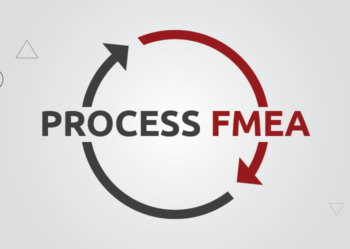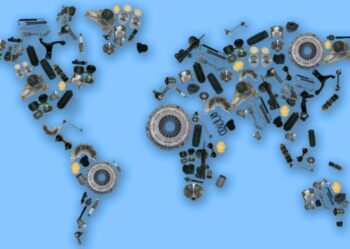SNECI certified ISO 9001

In order to fulfill our mission while respecting our values, we are committed to a continuous evolution of our quality system. The ISO 9001 standard is the international reference for the improvement of a quality management system and we are ISO 9001 certified.
ISO standards (or international standards) are symbols of quality. An ISO certification allows companies to stand out in their sector of activity. It demonstrates our commitment to work according to the requirements of the ISO standard in question, and to optimize the quality of our services through ISO 9001.
There are of course other ISO standards such as the one related to your environmental approach with ISO 14001; the safety and health of your employees at work with ISO 45001; or the security of information and data through ISO 27001.
An ISO certification is a guarantee of seriousness and quality for a company and for its potential customers.
Having an ISO 9001 certification, quality management means having a standard which is recognized in our results.
What defines the ISO 9001 ?
ISO 9001 is the international standard for quality management systems (Customer orientation, Leadership, Collaboration, Process approach, Improvement, Decision-making, Relationship management). It defines guidelines for the management, organization and optimal operation of a company, in order to ensure the quality of its services and products, the satisfaction of its customers and the implementation of good practices internally.
ISO 9001 is the ultimate global benchmark for quality management and an essential tool for driving and improving business profitability and potential.
ISO 9001 has been adopted by more than one million organizations in 176 countries. Implementing ISO 9001 in an organization results in measurable improvements in the performance of all its departments.
The ISO philosophy states: “Say what you do, do what you say and prove that you have done it”.
ISO 9001 brings added value to all businesses, of all sizes and in all activities; from the family business to the multinational corporation whatever its field of activity.
Why getting a certification ?
ISO 9001 is recognized as an essential tool to allow a company to move forward and confirm its results as well as the quality of the products and/or services offered to customers.
There are many reasons for business owners to become certified.
ISO 9001 allows to improve the profitability and to make the company recognized at the world level for its management of the quality as well internally as externally.
Secondly, the certification also allows for continuous improvement of the company’s performance through structured, yet flexible parameters.
Finally, thanks to its worldwide recognition, the ISO 9001 standard allows to attract new partners working exclusively with certified companies.
Moreover, ISO 9001 certification is a worldwide proof of success, profitability and above all quality of the company.
What are the benefits of ISO 9001:
- Customer satisfaction : the services and products offered and delivered should meet customer’s expectations
- Reduced operating costs: more efficiency through continuous improvement in operational processes. This also explains why at SNECI we have been specializing in industrial performance improvement and business development for almost 70 years now.
- Increased competitiveness: with a higher profit margin.
- More attractive on a national and international level: an ISO 9001 certification becomes a condition to work with more and more organizations, whether it is on a local or global level. Some tenders require ISO certification
- Easier and more transparent relationships between partners: mutually beneficial relationships and more trust from employees, customers and suppliers.
- Proof of credibility: through external audits to verify compliance with the standard on an annual basis.
- Improved risk management: much more consistency, accountability and traceability for services & products.
Applied and recognized throughout the world, ISO 9001 is an asset that can be used on both national and international markets. This recognition allows companies to become competitive on all international markets. It allows to establish processes taking into account the environment, the market, the risks and the opportunities.
It is through this certification that the company or organization anticipates and reduces potential dysfunctions. It constantly measures the efficiency of its services in order to implement a logic of continuous improvement. It defines perfectly and clearly the business objectives and allows the identification of new opportunities.
ISO 9001 improves and structures in an effective way the organization of a company by allowing it to gain in effectiveness, but also to reduce the cost of the anomalies and to propose the best product to the customers.
The latter allows companies to stand out from the competition.
On the other hand, this certification allows to gather the productions of the personnel around the same project and thus to allow the success of the company. No more differences are made, we no longer speak of “productive” and “non-productive” but of “collaborative project”. The work of the collaborators is done in an efficient and more effective way in order to increase productivity; all this, while preventing and reducing internal costs.
Secondly, ISO 9001 demonstrates to the customers the level of requirement to which they are entitled. Indeed, the beneficiaries of this certification respect a high level of organization.
In addition, it favors relations with service providers and clients and promotes internal relations.
Would a standard with so many advantages have obstacles?
Yes, the ISO 9001 standard can have obstacles because the commitment must be collective to ensure the success of such a project.
For example, the lack of commitment of the management or the resistance to change can impact a certification. Who hasn’t known a colleague who doesn’t want to change his or her way of working because of habit or negligence? Very often, the diplomacy of the internal teams and of the QMS project manager allow a smooth change management with explanations for a better involvement of the employees.
The last obstacle is the “administrative” side with all the documents that this involves. A quality system is often seen as a pile of documents with processes to be written down, which is often not appreciated by the teams.
The key to overcoming these obstacles, which are minimal given the advantages, is good internal communication and a collaborative rather than directive approach. This involves involving employees in the certification process by explaining to them the benefits for their position and the company, both in terms of productivity and customer satisfaction.
Concerning the document system that often makes teams grumble, the solution is simple: less paper.
Administrative documents have evolved enormously with new technologies and dematerialization.
It is now possible to replace long speeches with videos, films, PowerPoint, emails, webinars and IT in general. Bringing new ideas will never be bad.
How is the ISO 9001 standard implemented?
The implementation of the ISO 9001 certification is based on 8 steps.
- First of all, step 1 consists in the analysis of the context (SWOT…) and the integration of the stakes and the needs/expectations of the stakeholders.
- Then, in step 2 is grouped the determination of the processes and the evaluation of the risks and opportunities.
- In step 3 is established: policy, planning, objectives and indicators with the establishment of a system calendar that will allow the timing of major steps in the life of the quality system, action plan.
- Step 4 contains the documented information, internal and external communication as well as the focus on process management.
- Step 5 includes human resources, processes specific to the company’s business and metrology and measurement means.
- Then, step 6 focuses on the continuous improvement of the company and the identification of legal and other requirements.
- Step 7 is based on the preparation and conduct of internal audits as well as the management review (preparation, animation and reporting).
- Finally, step 8 is the certification audit.
The audit is usually done in one day but requires 12 months of preparation to meet the 7 steps mentioned above.
ISO 9001 and SNECI :
The audit within the framework of our ISO 9001 certification had for objectives:
- Determine the conformity of the management system to the standard under consideration (within the perimeter and scope of the audit),
- Evaluate the ability of the management system to ensure that the organization meets applicable legal, regulatory and contractual requirements,
- Evaluate the effectiveness of the management system to ensure that the organization continually meets its specified objectives,
- Identify areas of the management system where improvements can be made.
During this audit, it was found that SNECI had many strengths:
- A tree structure between 5-year strategic plan with a SWOT and associated KPIs.
- Industrial expertise provided to SNECI’s customers.
- A follow-up of the processes
- A search for added value
Our quality policy applies to all of our activities and is based on the following strategic axes:
- Satisfy the requirements of customers and interested parties
- Continuously improve our quality management system
- Regularly develop the skills of our employees and build their loyalty
- Ensure the health and safety of our employees
- Ensure the market watch in order to position ourselves in relation to our competitors
In order to implement these objectives, measurable targets are set and monitored at the process level, and reviewed regularly during process reviews and management reviews.
To achieve these operational objectives, the Quality Policy must be understood, shared, accepted and applied by all employees and be used as a tool for progress to identify and eliminate dysfunctions.
As we are ISO 9001 certified and specialize in industrial performance improvement, we support companies of all sizes, certified or not, in improving their industrial performance for greater profitability, thanks to our 10 subsidiaries and our 450 technical experts. We can also assist you in your quality audits, and we can also audit your suppliers with our custom ISA tool assessment adaptable to all industries and company sizes so don’t wait any longer and contact us!






